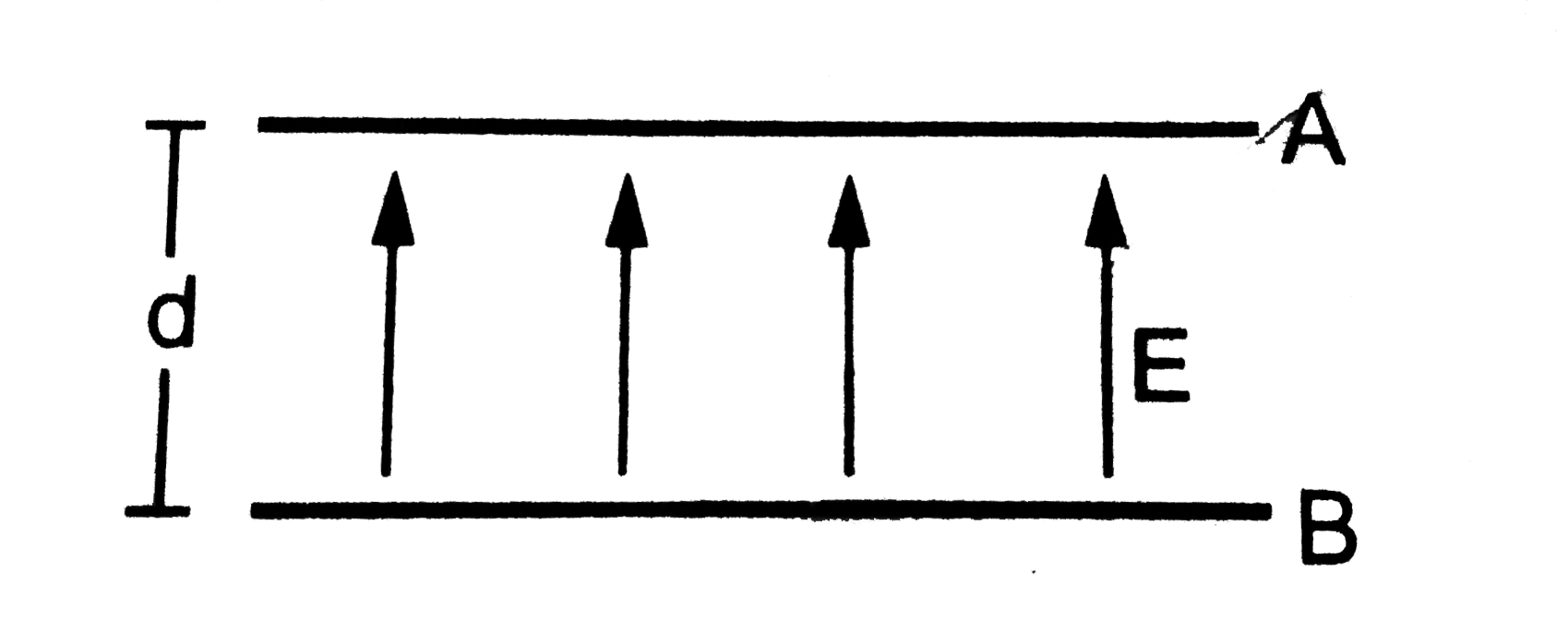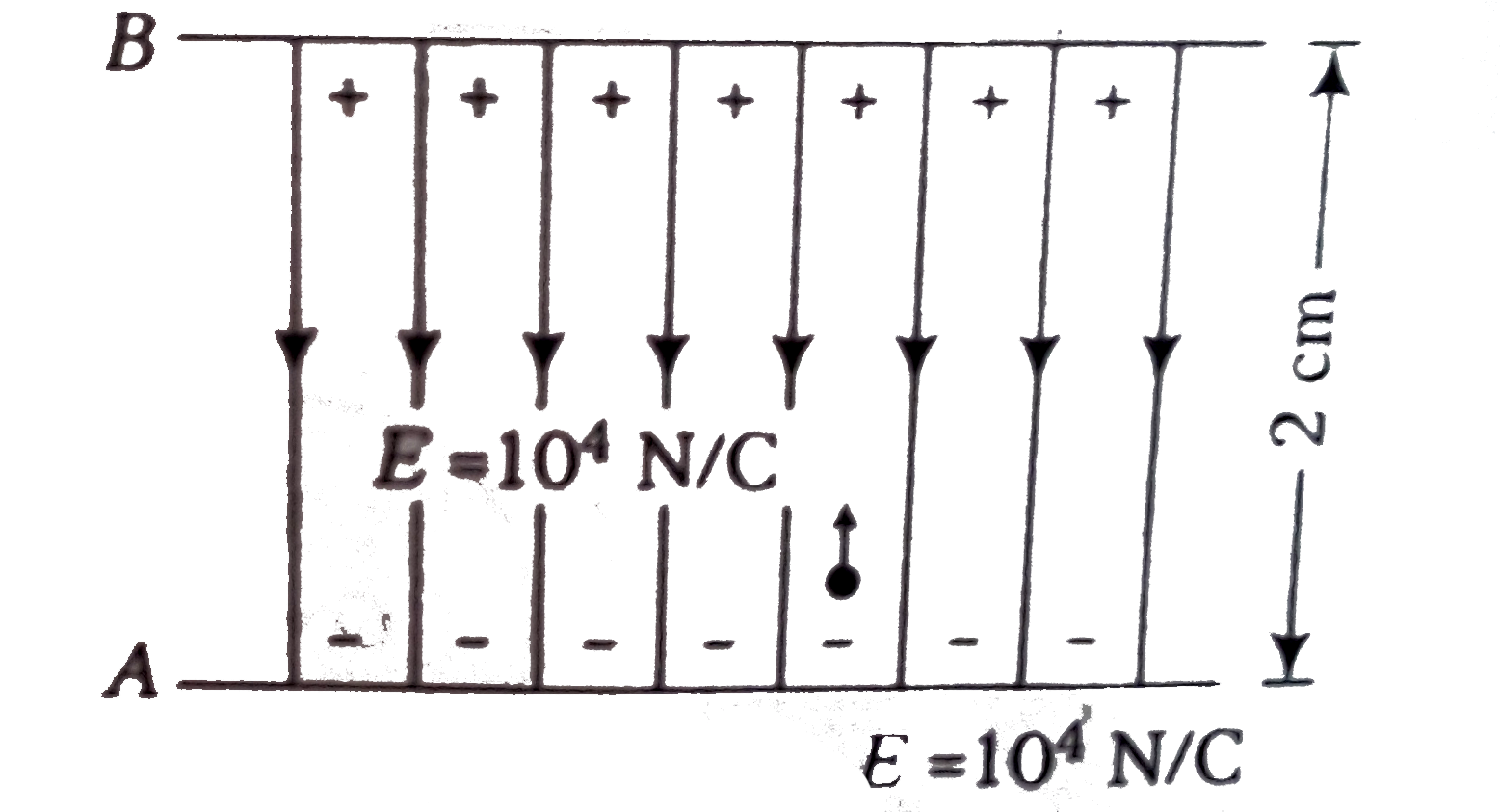Two charged metal plates in vacuum are 10cm apart. A uniform electric field of intensity is applied between the plates. An electron is released between the plates from rest at a point just outside the negative plate.
(a) Calculate how long (t) will the electron take to reach the other plate?
(b) At what velocity (v) will it be electron take to hits teh other plate?
Let's solve the problem step by step.
Given Data:
- Distance between the plates, s=10cm=0.1m
- Electric field intensity, E=4516×103N/C
- Charge of an electron, q=−1.6×10−19C
- Mass of an electron, m=9.1×10−31kg
Step 1: Calculate the Force on the Electron
The force F experienced by the electron in the electric field is given by:
F=qE
Substituting the values:
F=(−1.6×10−19)×(4516×103)
Calculating E:
E=4516×103=2.8125×103N/C
Now substituting:
F=−1.6×10−19×2.8125×103
Calculating F:
F=−4.5×10−16N
(The negative sign indicates the direction of the force is opposite to the electric field.)
Step 2: Calculate the Acceleration of the Electron
Using Newton's second law, F=ma:
a=Fm
Substituting the values:
a=−4.5×10−169.1×10−31
Calculating a:
a≈4.95×1014m/s2
Step 3: Calculate the Time Taken to Reach the Other Plate
Using the second equation of motion:
s=ut+12at2
Since the electron is released from rest, u=0:
s=12at2
Rearranging for t:
t2=2sa
Substituting the values:
t2=2×0.14.95×1014
Calculating t2:
t2=0.24.95×1014≈4.04×10−15
Taking the square root:
t≈√4.04×10−15≈2.01×10−8s
Step 4: Calculate the Final Velocity
Using the first equation of motion:
v=u+at
Since u=0:
v=at
Substituting the values:
v=(4.95×1014)×(2.01×10−8)
Calculating v:
v≈9.95×106m/s≈1.0×107m/s
Final Answers:
(a) The time taken t≈2.01×10−8s
(b) The velocity v≈1.0×107m/s
- Distance between the plates, s=10cm=0.1m
- Electric field intensity, E=4516×103N/C
- Charge of an electron, q=−1.6×10−19C
- Mass of an electron, m=9.1×10−31kg
The force F experienced by the electron in the electric field is given by:
F=qE
Substituting the values:
F=(−1.6×10−19)×(4516×103)
Calculating E:
E=4516×103=2.8125×103N/C
Now substituting:
F=−1.6×10−19×2.8125×103
Calculating F:
F=−4.5×10−16N
(The negative sign indicates the direction of the force is opposite to the electric field.)
Using Newton's second law, F=ma:
a=Fm
Substituting the values:
a=−4.5×10−169.1×10−31
Calculating a:
a≈4.95×1014m/s2
Using the second equation of motion:
s=ut+12at2
Since the electron is released from rest, u=0:
s=12at2
Rearranging for t:
t2=2sa
Substituting the values:
t2=2×0.14.95×1014
Calculating t2:
t2=0.24.95×1014≈4.04×10−15
Taking the square root:
t≈√4.04×10−15≈2.01×10−8s
Using the first equation of motion:
v=u+at
Since u=0:
v=at
Substituting the values:
v=(4.95×1014)×(2.01×10−8)
Calculating v:
v≈9.95×106m/s≈1.0×107m/s
(a) The time taken t≈2.01×10−8s
Topper's Solved these Questions
- COULOMB LAW AND ELECTRIC FIELDBook:CENGAGE PHYSICS ENGLISHChapter:COULOMB LAW AND ELECTRIC FIELDExercise:Subjective Type
Explore 15 Videos
- COULOMB LAW AND ELECTRIC FIELDBook:CENGAGE PHYSICS ENGLISHChapter:COULOMB LAW AND ELECTRIC FIELDExercise:Subjective
Explore 32 Videos
- COULOMB LAW AND ELECTRIC FIELDBook:CENGAGE PHYSICS ENGLISHChapter:COULOMB LAW AND ELECTRIC FIELDExercise:Solved examples
Explore 10 Videos
- CENGAGE PHYSICS DPPBook:CENGAGE PHYSICS ENGLISHChapter:CENGAGE PHYSICS DPPExercise:subjective type
Explore 51 Videos
- ELECTRIC CURRENT & CIRCUITSBook:CENGAGE PHYSICS ENGLISHChapter:ELECTRIC CURRENT & CIRCUITSExercise:Kirchhoff s law and simple circuits
Explore 15 Videos
Similar Questions
Two plates are 2cm apart, a potential difference of 10 volt is applied between them, the electric field between the plates is
View SolutionFigure shows two metallic plates A and B placed parallel to each other at a seperation d. A uniform electric field E exists between the plates in the direction from plate B to plate A. Find the potential difference between the plates.

View SolutionIf electric field is changing at rate of 6×106 V/ms between the plates of a capacitor. Having plate areas 2.0cm2, then the displacement current is
View SolutionA particle of mass m and charge q is released from rest in uniform electric field of intensity E. Calculate the kinetic energy it attains after moving a distance y between the plates.
View SolutionThe plate of a capacitor are 2.00cm apart . An electron -proton pair is released somewhere in the gap between the plates and it is found that the proton reaches the negative plate . At what distance from the negative plate was the pair released?
View SolutionAn electron is released from the bottom plate A as shown in the figure (E=104N/C). The velocity of the electron when it reaches plate B will be nearly equal to

View SolutionTwo parallel metal plates having charges +Q and −Q face each other at a certain distance between them.If the plates are now dipped in kerosene oil tank ,the electric field between the plates will
View SolutionTwo parallel metal plates having charges +Q and −Q face each other at a certain distance between them.If the plates are now dipped in kerosene oil tank ,the electric field between the plates will
View SolutionA uniform electric field E is created between two parallel
., charged plates as shown in figure . An electron
. enters the field symmetrically between the plates with a
. speed v_(0)'. The length of each plate is l. Find the angle of
. deviation of the path of the electron as it comes out
. of the field.

View SolutionA uniform electric field E is created between two parallel
., charged plates as shown in figure . An electron
. enters the field symmetrically between the plataes with a
. speed v_0. The length of each plate is l. Find the angle of
. deviation of the path of the electron as it comes out
. of the field.

View Solution